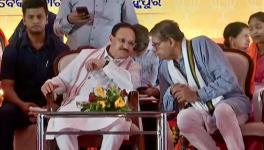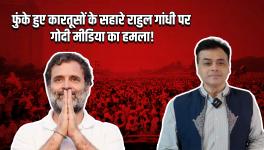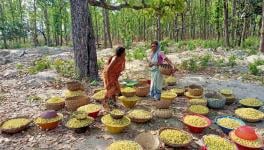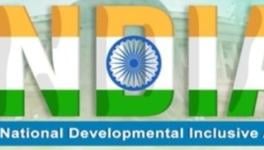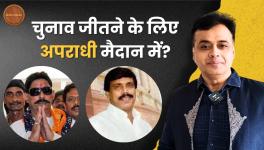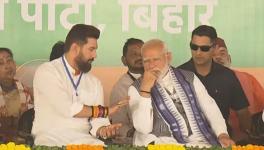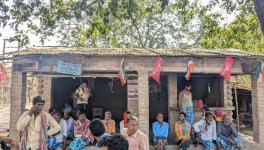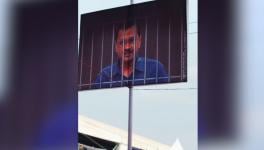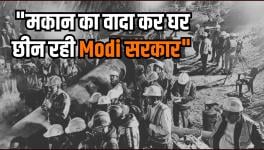'Hindutva Constructed Over Tomb of India's Pluralistic Ethos'
Acclaimed poet and critic, K. Satchidanandan, speaks on Upholding India’s Pluralism at the Idea of India conclave. Emphasising that plurality is central to a genuine understanding of the idea of India, he says that though people at large see diversity as natural, colonialists and fundamentalists have always seen it as an obstacle. He makes a distinction between people’s idea of plurality, the market idea of plurality and the statist idea of plurality and juxtaposes them with Hindutva thought, which sees people as a monolith. Recognising Hindutva’s fascist nature, he says that resistance from the people, although more difficult, is more necessary at this juncture.
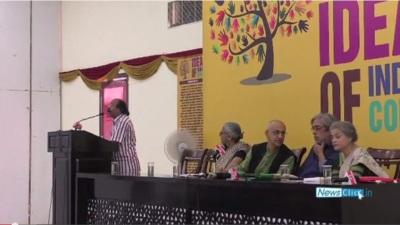
Transcript:
Dear friends I’ll take off from where Githa has left. She has already made extremely significant comments on our present cultural situation. We very well know that plurality is perhaps central to any understanding of the genuine Idea of India. There are various kinds of plurality religious, philosophical, ethnic, definitely cultural and artistic. All forms of plurality, in fact, ultimately define and create what India has been and what India is. While colonialists and fundamentalists have always tried to look at plurality as an obstacle while actually with their source of creativity from the point of view of the people and their living culture. Plurality also is, perhaps, central to our democracy and hatred of democracy- with the title of one of Ranciere’s great books- in India expresses itself chiefly in three ways. One is the intolerance towards India’s religious, ethnic, linguistic and cultural plurality. The second is the contempt for those sections of population whose welfare constitutes the very goal of democracy. I mean women, perasants and workers, dalits and adivasis and religious ethnic and sexual minorities- all those who actually define democracy by rendering the invisible visible and the inaudible audible, which is one of the major functions of democracy. Thirdly, the suppression of difference, silencing of popular and intellectual opposition and the consequent thwarting of the freedom of expression to which Githa has already made a few references. Fourthly, the enfeeblement of the federal polity and the increase in centralization of power. So these have been the four ways in which the enemies of the people have been trying to control, to distort the idea of democracy in India. Let me make it clear that I am speaking about plurality from the point of view of the lived reality of the people because the people have found this plurality always natural. It is the air they breathe, it is the organic environment they find around them, and for them it is something enriching and it has seldom been a problem or an obstacle. Our people have lived all through the ages with this great multiplicity.
There are two other ideas of plurality, one is of course the market idea where the champions of globalization and neo-liberalism see plurality as a diversity of consumer products, ethnicity as a trademark, regions as labels and tourist destinations and people as the producers for a centralized market; producers who are alienated from their own products and the local gets globalised through a mechanism of the market. The second is what I would call the statist idea of plurality which is, in fact, a colonial legacy where plurality is born again as an obstacle to governance and the function of the statist idea of plurality is to render plurality or multiplicity governable. So you have the 8th schedule of the constitution which keeps out a lot of languages in India and you have the linguistic states, you have federalism in word which is most often lost in actual practices of governance. You have a clean division among the folk, classical and modern which are defined through the various state cultural institutions and the establishment of an imagined community through various kinds of symbols. Perhaps the Republic Day Parade is the best example of the statist idea of plurality which is often a kind of painted mask. But both these, at least the market and state, acknowledge plurality but political Hindutva is constructed over the tomb of India’s pluralist ethos which believes in dialogue, in debate, in argument, in free expressions and conflicts of opinion and ideology. So actually this political Hindutva is a colonial construct which borrows elements from western orientalism, the Judaic idea of religion and the fascist ideas of cultural nationalism whose murderous intent has been expressed many times in our recent history right from Gandhi’s assassination to the Gujarat pogrom. I use the word deliberately as Martha Nussbaum used the word pogrom. It clearly shows the features of what Umberto Eco would call “Ur-Fascism” or a universal fascism. I have no time to go into the details.
The main features that he speaks of are the cult of tradition and uncritical appreciation of tradition and believing that the truth is something that is already revealed, the rejection of modernism and scientific thinking, the suspicion of intellectuals and creative people, seeing dissent as betrayal and fear of difference, the negation of pluralist ethos and the consequent creation of an “other” as a scapegoat that is responsible for all the social ills, an obsession with conspiracies and seeing pacifism as a kind of compromise and collusion with the enemy, nostalgia for a lost golden age, machismo that has scorn for the weak and condemns all non conformist sexual behavior which has contempt for women, contempt for transsexuals and then the cult of death. The Falanges of Spain had this motto- viva la muerte, victory to death, and then what can be a called a qualitative populism where people are seen as a monolith and the voice of a small group is taken to be or projected as the voice of the people which we have been seeing these days a lot and the avoidance of any kind of complex thinking, thinking only in black and white. So the very term Hindu invisiblises several cults and belief systems and forms of worship including the adivasi religions and the world views. Kosambi has traced how the myths got transformed and how ancient forms of worship were turned into forms of Hindu worship and we know how the Hinduism, the so called hindutvavadi speak of is a kind of construct and for them India is primarily a Hindu nation and they constructed Hinduism on the basis of Judaic religion making Krishna the prophet and Geeta reveal the book and sansara and moksha as principles like other religions and using traditional symbols like Locus which actually been associated with the Buddha and reinterpreting history. I have no time to go into the history of the growth of Hindutva ideology in India right from the Bhartiya Hindu Mahasabha of 1914, the founding of the RSS or the Bhartiya Jan Sangh.
I just read today that Syama Prasad Mookerjee, the icon is being revived and the BJP and VHP whose website, as its slogan quotes “Rajneeti ka Hindukaran” and “Hindustan ka Sainikaran”, you can go to the website and see this even today. So this political Hindutva is the enemy of pluralism in every sense. The first casualty is religious pluralism because it believes in one religion and that too a religion interpreted in an extremely monolithic fashion, ethnic because they always speak of the Aryan origins of the Indian people by silencing other races, cultural- Indian culture is seen as a Hindu culture, linguistic because Sanskrit is privileged over even other ancient languages like Tamil and Pali and Apabhramsha, and you also heard how Hindi is now presented as a kind of national language while it is one of the two official languages of India and political because of what Noorani recently called the “theatre of celebrity” where power is concentrated in one person even though apparently there is a ministry and intellectual- Githa has already given examples of intellectual and artistic suppression-Wendy Doniger, A.K. Ramanujan, Mallika Sarabhai, M.F Hussain and recently the killing of Mohsin Shaikh. We have several examples from recent history of how the intellectual and artistic plurality are being interrogated and slain and of course ecological diversity and the recent comments on the IB report and silencing of all people’s resistance that too we see. I will just conclude saying that the resistance is perhaps becoming more difficult today and at the same time more necessary. We need to realize that freedom is the freedom to oppose and to critique and not the freedom to agree. I quote a judge- “It is bad to be oppressed by a minority but it is worst to be oppressed by a majority for there is a reserve of latent power in the masses which, if it is called into play, the minority can seldom resist” and that’s exactly why we need to resist. Thank you.
Get the latest reports & analysis with people's perspective on Protests, movements & deep analytical videos, discussions of the current affairs in your Telegram app. Subscribe to NewsClick's Telegram channel & get Real-Time updates on stories, as they get published on our website.









